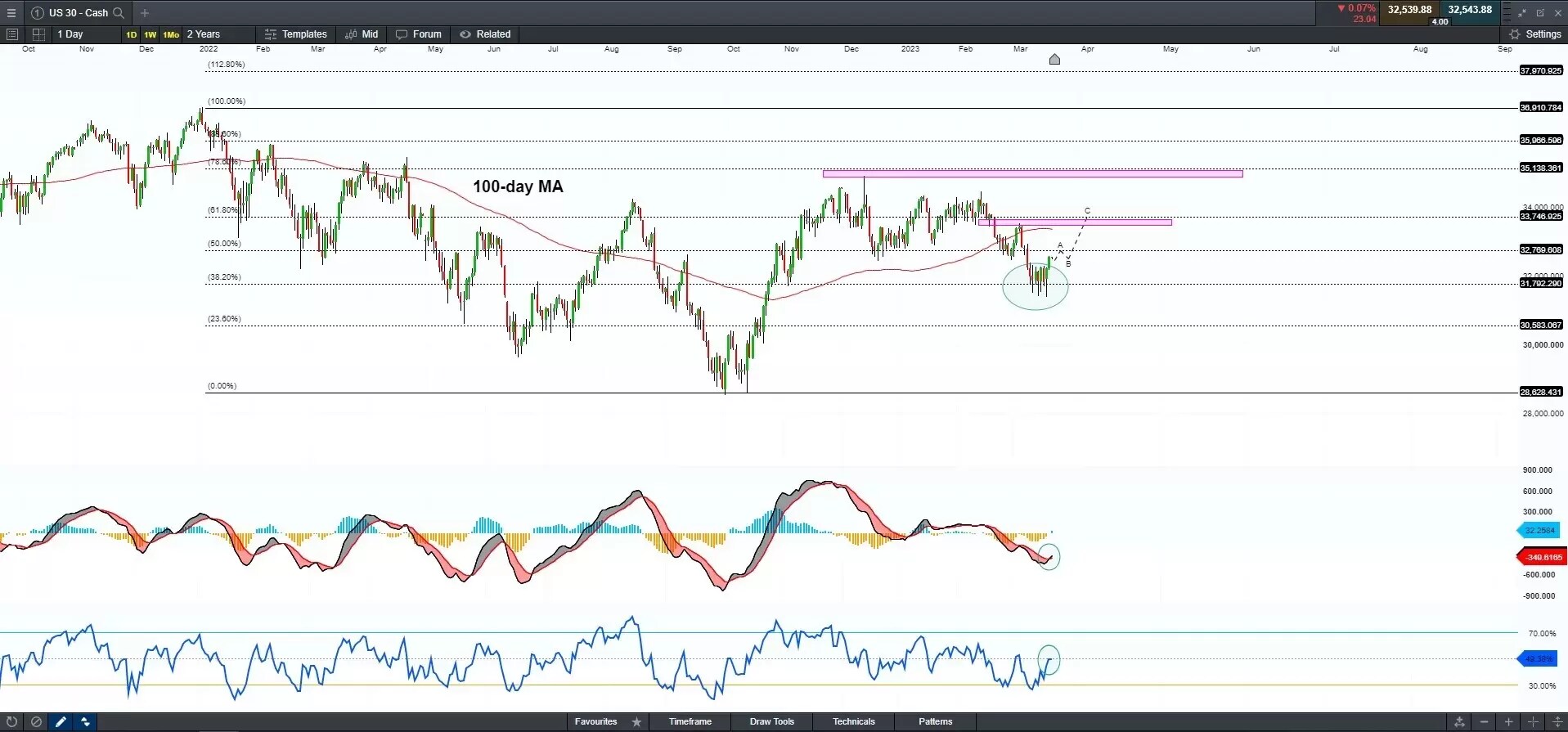The recent bank turmoil seems to strengthen investors’ expectations for the Fed to pivot on rate hikes as soon as the upcoming meeting. But there is little chance for the Fed to end the cycle as US inflation stays well above its target level of 2%. The February headline CPI printed at 6%, a further decline from 6.4% in January. However, core inflation rose by 0.5% month by month, higher than the consensus. Nonetheless, the Fed will not pause rate hikes since the contagion risk of the bank's rout seems to be contained. So, the answer to the title is NO, or NOT YET. But it might be close to a pivot. Let me explain below.
In fact, the degree of the rate hikes is not the focus of the markets since it is widely expected, but Fed’s comments on the recent bank’s rout and its measures to stabilize the financial markets will be key on the watch. It is almost certain that the Fed does not want to spook markets by insisting on its hawkish stance of an aggressive approach to interest rates, as it may re-spark a confidence crisis in banks and cause a potential financial crisis leading to a likely economic recession. The banking chaos is actually far away from being settled; regional banks’ risks are now spreading into the wider banking system through the recent rescue packages. This may also mark a new start for the central banks to rush liquidities into markets to save a crisis. And more rate hikes will impose more risks on the extra debts that the central banks are offering.
What is expected of the stock market reaction to the Fed decision?
Since the Fed is not likely to pause a rate hike, stock markets may continue to climb in the 2023 bull run as the Fed will only pivot when it sees an immediate risk for a crisis, which is shown in all the previous rate hike cycle, markets crash during a rate cut cycle instead of a rate hike cycle before an economic recession happens. If you are confused, please see the below chart as a reference.

I had the same chart for my last Fed preview article in February, and this trend does not change as long as the Fed is still on its rate hike cycle. The Dow Jones Industrial Average was all up when the Fed kept raising rates but was close to capitulating. The index keeps its bull run until the Fed eventually cuts rates. Let’s hope the recent bank turmoil will not trigger a recession so soon.
The US dollar may stay in the downtrend
The US dollar index (DXY) topped out in mid-October last year when the US inflation peaked. The US 5-year inflation expectation has also declined from above 3% in June 2022 to 2.8% in March this year. Tracing the trend in cooling inflation, the US 10-year bond yield fell to 3.9% from a 5-year high of 4.07% in early October. The US dollar is most likely to stay in its downtrend if inflation continues to cool, along with a sharp decline in the US bond yields.

The above chart also shows that the dollar index has hit a trendline resistance, positively correlating with the US 10-year bond yield. The SVB and Signature banks’ collapses also pressed on the dollar as funds switched to haven currencies, such as the Eurodollar and the Japanese Yen.
Technical analysis
Dow – a potential bottom reversal surfaces

Dow rebounded from the recent support of about 31,400 for the last multiple sessions, suggesting that its resilient moves may take the index higher and test the 100-day moving average at around 33,500. MACD is forming a golden cross, indicating a bottom reversal may be in place, while RSI is on its uptrend. A breakout of the resistance at 33,500 could take it to head for the high of 35,000 back in April 2022.
Disclaimer: CMC Markets is an order execution-only service. The material (whether or not it states any opinions) is for general information purposes only, and does not take into account your personal circumstances or objectives. Nothing in this material is (or should be considered to be) financial, investment or other advice on which reliance should be placed. No opinion given in the material constitutes a recommendation by CMC Markets or the author that any particular investment, security, transaction or investment strategy is suitable for any specific person. The material has not been prepared in accordance with legal requirements designed to promote the independence of investment research. Although we are not specifically prevented from dealing before providing this material, we do not seek to take advantage of the material prior to its dissemination.








